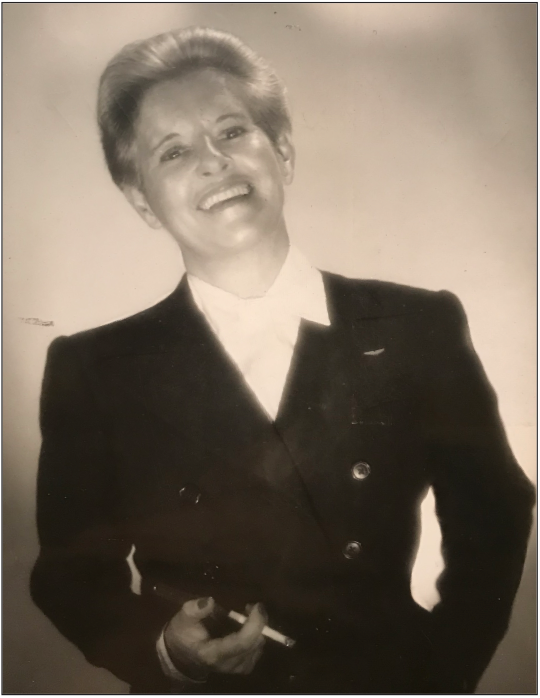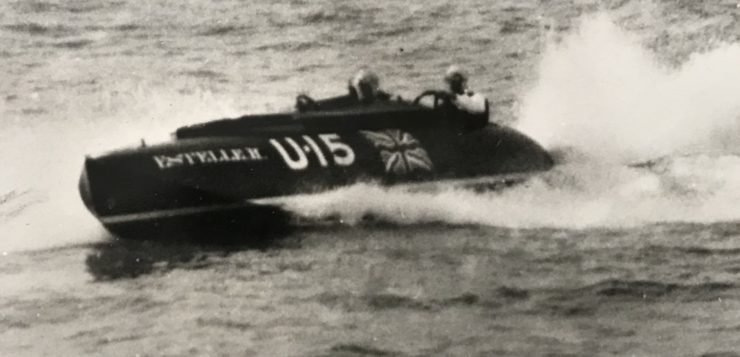NINETEEN TWENTY-SIX proved a banner year for Joe Carstairs—yes, she called herself Joe, not Jo—marking her try as a champion speedboat racer and winning the Duke of York trophy, then the most prestigious in speed racing. She was the only woman in a field of nine in the star-studded event, and the excitement had led tens of thousands of fans (one estimate put the figure at a million) to crowd the banks of the Thames. In short order, one contestant after another fell by the wayside, knocked out of the competition by ignition failure, an engine blowing up, collision with a buoy or another boat—or being thrown overboard by the powerful swell of the water.*
By the final heat, only two of the nine boats remained in contention: Herr Krueger, the German entry, and Joe Carstairs, steering her seventeen-foot hydroplane, dramatically painted black, with a white stripe running its length. Approaching the finish line, both finalists ran into trouble. The connecting rod on Krueger’s boat broke, disabling it, while a tangled rope in the gears threatened to stop Carstairs’ boat cold—until she somehow managed to cut it loose with a knife, and raced to victory. That same year of 1926, after winning a number of other major races, Carstairs was awarded the Médaille d’honneur, given annually for the “most meritorious motor-boat performance throughout the year.”

For the next half-dozen years, Carstairs continued to compete, and with remarkable success. But the sport was both dangerous and expensive. Having driven an ambulance in France during World War I, Joe scoffed at the danger, insisting to one reporter that the so-called “threats” involved were better seen as “discomforts”—though she did acknowledge that “floating wreckage at speed can cut a hole through the bottom of the boat like a razor cutting canvas.”
Martin Duberman’s recent books include Andrea Dworkin: The Feminist as Revolutionary and Has the Gay Movement Failed?





